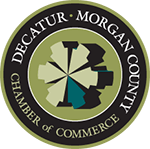The Art of First Impressions: What Belongs in Your Digital Welcome Kit
When someone agrees to work with a new business, there's a moment of subtle anticipation—on both sides. It's not just about the product or service anymore; it's about experience, tone, and trust. That's where a digital welcome kit becomes more than a polite gesture. It's the starting point for a relationship, an opportunity to set expectations, and a signal that professionalism meets personality from the very first exchange.
Lead With a Personalized Welcome Letter
Before diving into links, logistics, or branded PDFs, it’s worth starting with something that feels human. A personalized welcome letter, written in plain language and addressed directly to the client, sets an intentional tone. It doesn't need to be long, but it should show that someone real is behind the curtain—someone who took the time to say, “Glad you’re here.” People can tell when a message has been auto-filled and auto-sent; the goal is to deliver a note that actually lands.
Polish Your Visuals Before Hitting Send
Images that appear in client-facing emails or documents often get overlooked in the rush to communicate, but they speak volumes about attention to detail. Crooked angles, messy backdrops, or random signage in the background can subtly distract or even undermine the professionalism of the message. Before sending, it’s worth taking a moment to refine every visual, ensuring the imagery is as clean and intentional as the words beside it. Tools that let you easily remove object from photo—whether it’s clutter, odd reflections, or out-of-place props—make it simple to present your brand exactly the way it should be seen.
Define Expectations Without the Jargon
New clients rarely ask for clarity upfront, but they notice its absence quickly. That’s why a digital welcome kit should include a brief, readable breakdown of how things typically go from this point forward. Timeline expectations, preferred communication channels, turnaround times, and any relevant policies all belong here—but stripped of corporate lingo. This document should speak like a guide, not a lawyer, and the result should be confidence instead of confusion.
Offer a Directory, Not a Data Dump
People like to know who they’re working with, even if they never speak to the full team. Including a team directory with names, photos, roles, and contact points turns a faceless process into a collaborative one. This doesn’t need to be exhaustive, just accessible and approachable. Clients don’t want to scroll through org charts; they just want to know who’s who and who to ask when they have a question.
Introduce Tools With Thoughtfulness
If clients will be expected to use platforms—whether for meetings, project tracking, or asset sharing—those tools need proper context. A thoughtful introduction to each digital platform, complete with login instructions and a quick-start video or PDF, can reduce tech fatigue and avoid early stumbles. It’s not just about functionality; it’s about reducing friction. Assume the person on the other side has never seen your favorite tool before, and frame everything accordingly.
Include a FAQ That Actually Gets Used
The typical FAQ is often a missed opportunity: too vague, too broad, or obviously written for legal protection. A more useful approach is to include questions that clients actually ask in the first few weeks—things like billing procedures, how to submit revisions, what holidays the company observes, or how to provide feedback. Think of it less like a catch-all and more like a shortcut. The goal is to answer unspoken questions before they become awkward emails.
Wrap It Up With Something Unexpected
Beyond the essentials, it’s the small unexpected details that make a digital welcome kit memorable. A Spotify playlist curated by the team. A desktop wallpaper with a calming design. A voucher for a local coffee shop. These touches aren’t necessary, but they’re appreciated—and they say something about how the business sees its clients. It’s not about flash; it’s about delight, and there’s always room for that in a first impression.
What makes a welcome kit effective isn’t the length or the graphic design—it’s the way it makes a client feel. In a sea of onboarding documents that often feel cold or formulaic, this is a chance to do something intentional. To tell someone, “You made the right choice,” not just through words, but through clarity, personality, and small, considered details. When done well, a digital welcome kit becomes more than a file. It becomes the first step in building trust.


